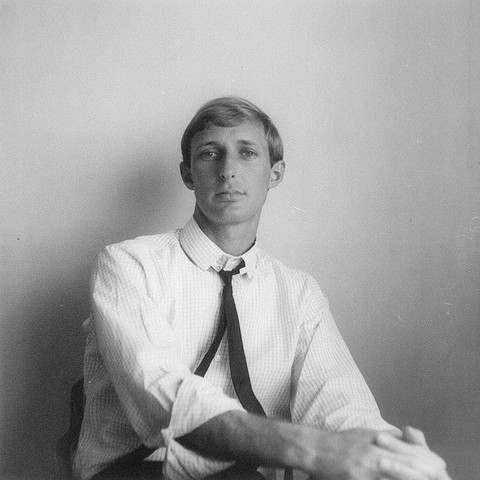This text was first published in Desktop #271.
Remarkably, given the length and diversity of his career, Garry Emery continues to produce the type of work which has built a reputation stretching far beyond our shores. I first met him some 20 years ago: I was starting out on a graphic designer career, he was firmly established as one of the country’s premier design practitioners. We met at the imposing South Melbourne studio of his burgeoning practice, Emery Vincent Associates, and it proved to be one of those pivotal formative events every young designer needs. He generously spent an hour of his valuable time discussing my folio, offering constructive suggestions, speaking in soft tones and demonstrating the occasional hint of his dry wit.
I was too overwhelmed to absorb much, my armpits soaked and my heart racing. In truth, my most specific recollection pertains to the studio’s vast library. Located at the heart of Emery Vincent Associates both physically and philosophically, its shelves were filled with a diverse range of titles covering not only graphic design, but also art, architecture and popular culture. This was a revelation to me. Until that moment I had really only considered seeking inspiration from within the narrow confines of my own discipline; I have grown to appreciate that such thinking results in narrow outcomes. An unrelenting pursuit of knowledge remains central to Emery’s methodology, while cultural and historical perspective informs much of his work.
He is profoundly interested in the intellectual process of design, in thinking over outcome. He shared this philosophy with his friend, colleague and mentor Les Mason. Soon after arriving in Melbourne from Perth in the early sixties, Emery freelanced for Mason and the two men began a friendship which lasted for the next five decades until Mason’s passing in 2009. The outspoken ex-pat American left an indelible mark on his younger tyro, and, more broadly, on the industry itself. The two rarely discussed their work, but spoke of cultural pursuits, literature, architecture, music and of course, art.
Emery lists such profuse and diverse artistic inspiration as minimalism, modernism, constructivism, futurism, expressionism, dada and surrealism. Indeed, it is the fusion of rationalism and surrealism that are central to the special alchemy of Emery’s work, and perhaps, the man himself. He has said that his ideas come from: ‘rationalism, or the legible organisation of information, and from surrealism, or the chance conjunction of unrelated images. Surrealism helps to communicate an idea with vitality and immediacy.’ This thinking is especially evident in Emery Vincent Associates’ work from the 1980s. Surrealist and Dadaist references regularly appeared in posters for production houses, logos for framing companies and pharmaceutical marketing. In the hands of a less-informed designer, deploying such familiar icons runs the risk of parody, but Emery uses them to challenge perceptions, to engage and intrigue, much in the manner of the artists themselves.
The 1980s saw Emery Vincent Associates grow exponentially with a succession of high profile, decade-defining commissions including Sydney’s Powerhouse Museum, pavilions at Brisbane’s Expo 88, the Australian embassy in Beijing and Tokyo and, most significantly, Australia’s new Parliament House in Canberra. Many of these were pioneering environmental graphic design projects completed in close collusion with Australia’s finest architects. Denton Corker Marshall, designers of Emery Vincent Associates’ memorable workplace, have been frequent collaborators. The Melbourne Exhibition Centre, completed in 1995, personifies a uniquely synergistic partnership.
I had cause recently to reconnect with Garry Emery. A personal project centred on Les Mason was the catalyst, and we met again at the offices of emerystudio (as his practice is now known). Sitting at a meeting table, Garry spoke eloquently and enthusiastically about a man who had profoundly influenced him. The affinity between the two was obvious in his description of Mason as ‘an enigmatic character who saw design as an intellectual pursuit.’ He spoke also of his own work, of new global opportunities for emerystudio in Asia, the United Kingdom, Africa and the Middle East. Despite five decades pushing boundaries, challenging convention and raising the creative bar, his own thirst for knowledge shows few signs of diminishing.
Dominic Hofstede, 2011.
